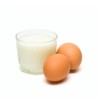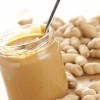 Families choose to bottle-feed their babies for many reasons. While bottle-feeding is not difficult, you need to know several things to feed your baby safely and ensure that he or she receives the nutrition and bonding needed for proper growth and development. If you are considering bottle-feeding your baby or have decided that bottle-feeding is the best option for your situation, this publication will help you learn about bottle-feeding. This 5-page fact sheet was written by Sarah A. Schmidt, Karla P. Shelnutt, and Gail P. A. Kauwell, and published by the UF Department of Family Youth and Community Sciences, April 2013.
Families choose to bottle-feed their babies for many reasons. While bottle-feeding is not difficult, you need to know several things to feed your baby safely and ensure that he or she receives the nutrition and bonding needed for proper growth and development. If you are considering bottle-feeding your baby or have decided that bottle-feeding is the best option for your situation, this publication will help you learn about bottle-feeding. This 5-page fact sheet was written by Sarah A. Schmidt, Karla P. Shelnutt, and Gail P. A. Kauwell, and published by the UF Department of Family Youth and Community Sciences, April 2013.
http://edis.ifas.ufl.edu/fy1359
Tag: Karla P. Shelnutt
Choose MyPlate: Drink Water Instead of Sugary Drinks (FCS80025/FY1358)
 The regular consumption of sugary drinks has greatly increased over the past few decades. Most adults consume about 400 calories per day as beverages, and regular soda is the number one drink. The added sugars and calories in sugary drinks can really add up — so rethink what you drink! Use one or more of the tips provided to drink more water and get on the right track to living a healthier life. This 3-page fact sheet was written by Jeanine Beatty, Karla Shelnutt, and Gail Kauwell, and published by the UF Department of Family Youth and Community Sciences, April 2013.
The regular consumption of sugary drinks has greatly increased over the past few decades. Most adults consume about 400 calories per day as beverages, and regular soda is the number one drink. The added sugars and calories in sugary drinks can really add up — so rethink what you drink! Use one or more of the tips provided to drink more water and get on the right track to living a healthier life. This 3-page fact sheet was written by Jeanine Beatty, Karla Shelnutt, and Gail Kauwell, and published by the UF Department of Family Youth and Community Sciences, April 2013.
http://edis.ifas.ufl.edu/fy1358
Raising Healthy Children: Health Risks of Obesity (FCS80023/FY1356)
 Although babies need fat for warmth and normal growth, as children develop, too much fat can be unhealthy. Childhood obesity may result in health problems early in life and into adulthood. This 4-page fact sheet will help you understand the health risks of obesity and ways to help your child maintain a healthy weight. Written by Stephanie Meyer, Karla Shelnutt, and Gail Kauwell, and published by the UF Department of Family Youth and Community Sciences, April 2013.
Although babies need fat for warmth and normal growth, as children develop, too much fat can be unhealthy. Childhood obesity may result in health problems early in life and into adulthood. This 4-page fact sheet will help you understand the health risks of obesity and ways to help your child maintain a healthy weight. Written by Stephanie Meyer, Karla Shelnutt, and Gail Kauwell, and published by the UF Department of Family Youth and Community Sciences, April 2013.
http://edis.ifas.ufl.edu/fy1356
MyPlate Foods to Increase: Fruits and Vegetables (FCS80022/FY1348)
 Fruits and vegetables should be a main component of every meal. They are low in calories and provide a number of vitamins that you need in your diet. By making half of your plate fruits and vegetables at every meal, you will reduce your risk for chronic diseases and may even protect yourself against certain types of cancer. This 4-page fact sheet provides information on fruits and vegetables and includes tips on how to add more of them to your diet. Written by Jonathan Holzinger, Karla Shelnutt, and Gail Kauwell, and published by the UF Department of Family Youth and Community Sciences, February 2013.
Fruits and vegetables should be a main component of every meal. They are low in calories and provide a number of vitamins that you need in your diet. By making half of your plate fruits and vegetables at every meal, you will reduce your risk for chronic diseases and may even protect yourself against certain types of cancer. This 4-page fact sheet provides information on fruits and vegetables and includes tips on how to add more of them to your diet. Written by Jonathan Holzinger, Karla Shelnutt, and Gail Kauwell, and published by the UF Department of Family Youth and Community Sciences, February 2013.
http://edis.ifas.ufl.edu/fy1348
Abdominal Obesity (FCS80021/FY1347)
 Santa Claus, Winnie the Pooh®, and Shrek® … what do these three characters have in common? You probably know them for being jolly and for having extra fat around their waists, also known as “abdominal obesity.” Although this may be cute in fairy tales or movies, abdominal obesity can be a serious health risk in the real world. Abdominal obesity, also known as central adiposity, is a buildup of fat tissue around the waist or midsection. It is a risk factor for certain health conditions. Read this 4-page fact sheet to find out more about the health risks of abdominal obesity and ways to prevent or treat it. Written by Erica Bub, Karla Shelnutt, and Gail Kauwell, and published by the UF Department of Family Youth and Community Sciences, February 2013.
Santa Claus, Winnie the Pooh®, and Shrek® … what do these three characters have in common? You probably know them for being jolly and for having extra fat around their waists, also known as “abdominal obesity.” Although this may be cute in fairy tales or movies, abdominal obesity can be a serious health risk in the real world. Abdominal obesity, also known as central adiposity, is a buildup of fat tissue around the waist or midsection. It is a risk factor for certain health conditions. Read this 4-page fact sheet to find out more about the health risks of abdominal obesity and ways to prevent or treat it. Written by Erica Bub, Karla Shelnutt, and Gail Kauwell, and published by the UF Department of Family Youth and Community Sciences, February 2013.
http://edis.ifas.ufl.edu/fy1347
Raising Healthy Children: Milk and Egg Allergies (FCS80020/FY1346)
 Milk and eggs are familiar, nutritious foods that most children enjoy, but these foods can cause problems for children with milk and egg allergies. If your child is allergic to milk or eggs, you need to consider steps you and your child can take to avoid these foods, and you need to make sure your child gets enough of the proper nutrients, especially if certain foods are removed from his or her diet. This 5-page fact sheet will help you learn more about milk and egg allergies and how to make sure your allergic child stays safe. Written by Jonathan Holzinger, Karla Shelnutt, and Gail Kauwell, and published by the UF Department of Family Youth and Community Sciences, February 2013.
Milk and eggs are familiar, nutritious foods that most children enjoy, but these foods can cause problems for children with milk and egg allergies. If your child is allergic to milk or eggs, you need to consider steps you and your child can take to avoid these foods, and you need to make sure your child gets enough of the proper nutrients, especially if certain foods are removed from his or her diet. This 5-page fact sheet will help you learn more about milk and egg allergies and how to make sure your allergic child stays safe. Written by Jonathan Holzinger, Karla Shelnutt, and Gail Kauwell, and published by the UF Department of Family Youth and Community Sciences, February 2013.
http://edis.ifas.ufl.edu/fy1346
Raising Healthy Children: Packing a Peanut-Free Lunch (FCS80019/FY1345)
 Peanut butter is a staple in the diets of many children, but it can cause serious problems for those with a peanut allergy. Knowing how to identify foods that contain peanuts, what to pack for school lunches, and how to reduce accidental contact with peanuts will help keep children with peanut allergies safe when they are away from home. This 5-page fact sheet was written by Sarah Schmidt, Karla Shelnutt, and Gail Kauwell, and published by the UF Department of Family Youth and Community Sciences, February 2013.
Peanut butter is a staple in the diets of many children, but it can cause serious problems for those with a peanut allergy. Knowing how to identify foods that contain peanuts, what to pack for school lunches, and how to reduce accidental contact with peanuts will help keep children with peanut allergies safe when they are away from home. This 5-page fact sheet was written by Sarah Schmidt, Karla Shelnutt, and Gail Kauwell, and published by the UF Department of Family Youth and Community Sciences, February 2013.
http://edis.ifas.ufl.edu/fy1345
Alimentación Saludable: Comidas que no requieren cocinarse (FCS8934Span/FY1216)
 ¿Puede encontrar las palabras relacionadas con la ensalada “suroeste de frijoles negros” en este sopa de letras? Incluye una receta para ensalada del Suroeste de frijoles negros. This 2-page fact sheet was written by Karla P. Shelnutt and published by the UF Department of Family Youth and Community Sciences, May 2012.
¿Puede encontrar las palabras relacionadas con la ensalada “suroeste de frijoles negros” en este sopa de letras? Incluye una receta para ensalada del Suroeste de frijoles negros. This 2-page fact sheet was written by Karla P. Shelnutt and published by the UF Department of Family Youth and Community Sciences, May 2012.
http://edis.ifas.ufl.edu/fy1216
Healthy Eating: Meals Without Cooking (FCS8934/FY1215)
 Enjoy a word search for the ingredients in this recipe for southwestern black bean salad. This 2-page fact sheet was written by Karla P. Shelnutt, and published by the UF Department of Family Youth and Community Sciences, May 2012.
Enjoy a word search for the ingredients in this recipe for southwestern black bean salad. This 2-page fact sheet was written by Karla P. Shelnutt, and published by the UF Department of Family Youth and Community Sciences, May 2012.
http://edis.ifas.ufl.edu/fy1215
Facts About Energy Drinks (FCS80017/FY1324)
 You can’t walk into a supermarket these days without seeing a wide selection of energy drinks, many claiming that they do everything from boosting your energy to helping you focus. In fact, energy drinks are so popular that, on average, Americans drank about 15 cups per person in 2007. But what’s in a typical energy drink? Do they really work? And are there any health risks from consuming them? This 4-page fact sheet was written by Erica Bub and Karla Shelnutt, and published by the UF Department of Family Youth and Community Sciences, April 2012.
You can’t walk into a supermarket these days without seeing a wide selection of energy drinks, many claiming that they do everything from boosting your energy to helping you focus. In fact, energy drinks are so popular that, on average, Americans drank about 15 cups per person in 2007. But what’s in a typical energy drink? Do they really work? And are there any health risks from consuming them? This 4-page fact sheet was written by Erica Bub and Karla Shelnutt, and published by the UF Department of Family Youth and Community Sciences, April 2012.
http://edis.ifas.ufl.edu/fy1324
Healthy Eating: Finding Good Health (FCS80010Span/FY1306)
 There are many different Nutritional Risk Factors that can affect our eating as we age, and it is important to fight these risk factors for better eating. In this word search, try to find these words that are important for a healthier lifestyle. This 1-page handout was written by Karla P. Shelnutt and published by the UF Department of Family Youth and Community Sciences, March 2012.
There are many different Nutritional Risk Factors that can affect our eating as we age, and it is important to fight these risk factors for better eating. In this word search, try to find these words that are important for a healthier lifestyle. This 1-page handout was written by Karla P. Shelnutt and published by the UF Department of Family Youth and Community Sciences, March 2012.
http://edis.ifas.ufl.edu/fy1306
Alimentación Saludable: Buscando buena salud (FCS80010Span/FY1307)
 Hay diferentes Factores de Riesgo Nutricional que pueden afectar nuestra alimentación a medida que envejecemos. Es importante luchar contra estos factores de riesgo para tener una mejor alimentación. En esta “sopa de letras,” trate de encontrar palabras que son importantes para un estilo de vida saludable.
Hay diferentes Factores de Riesgo Nutricional que pueden afectar nuestra alimentación a medida que envejecemos. Es importante luchar contra estos factores de riesgo para tener una mejor alimentación. En esta “sopa de letras,” trate de encontrar palabras que son importantes para un estilo de vida saludable.
This 1-page handout was written by Karla P. Shelnutt and published by the UF Department of Family Youth and Community Sciences, March 2012.
http://edis.ifas.ufl.edu/fy1307
Raw Milk: Fact or Fiction (FCS80004/FY1295)
 The use of raw milk as a beverage for humans is a hotly debated topic. A simple Internet search using the term “raw milk” yields conflicting claims about its benefits and dangers. Many people base their opinions about raw milk on myths rather than facts. Not knowing the risks may lead people to drink raw milk and risk illness from harmful bacteria. If you are thinking about adding raw milk to your diet, or if you are curious about the debate, then this 5-page fact sheet will help you sort through the myths and facts of the raw milk debate. Written by Michelle A. Zitt, Ron Schmidt, and Karla P. Shelnutt, and published by the UF Department of Family Youth and Community Sciences, March 2012.
The use of raw milk as a beverage for humans is a hotly debated topic. A simple Internet search using the term “raw milk” yields conflicting claims about its benefits and dangers. Many people base their opinions about raw milk on myths rather than facts. Not knowing the risks may lead people to drink raw milk and risk illness from harmful bacteria. If you are thinking about adding raw milk to your diet, or if you are curious about the debate, then this 5-page fact sheet will help you sort through the myths and facts of the raw milk debate. Written by Michelle A. Zitt, Ron Schmidt, and Karla P. Shelnutt, and published by the UF Department of Family Youth and Community Sciences, March 2012.
http://edis.ifas.ufl.edu/fy1295
MyPlate Foods to Increase: Whole Grains (FCS80005/FY1297)
A higher intake of whole grains is associated with a lower body mass index (BMI) and distribution of fat around the abdomen, but only 7% of American adults meet the recommended intake. This 3-page fact sheet provides information on whole grains and their health benefits as well as how to include whole grains in your diet. Written by Jonathan Holzinger and Karla Shelnutt, and published by the UF Department of Family Youth and Community Sciences, March 2012.
http://edis.ifas.ufl.edu/fy1297
Raising Healthy Children: Food Allergies (FCS8997/FY1282)
If your child with a newly diagnosed food allergy, you may feel scared, confused, and anxious. You are not alone. According to the Centers for Disease Control and Prevention, over three million children under the age of 18 have food allergies, and this number is growing rapidly. Food allergies can be caused by many different foods. The symptoms range from a mild skin rash to serious breathing problems. This 4-page fact sheet highlights the causes and symptoms of an allergic reaction, as well as the steps to take if your child has been diagnosed with a food allergy. Also included are recipes and possible changes to your family’s diet that can help make meal time easier. Written by Lauren Headrick, Karla P. Shelnutt, and Gail P. A. Kauwell, and published by the UF Department of Family Youth and Community Sciences, March 2012.
http://edis.ifas.ufl.edu/fy1282
Criando niños saludables: Un año (FCS8888Span/FY1253)
 Felicitaciones! ¿Puede creer que su pequeño va a cumplir un año? Ahora, su bebé tiene al menos el triple del peso con que nació. Puede estar dando su primer paso o estar casi listo para hacerlo. Muchos cambios interesantes en su desarrollo suceden durante este año. Ayudar a su pequeño a desarrollar hábitos sanos es la base para un futuro saludable. Hay varios pasos que usted puede tomar para guiar a su bebé en la dirección correcta. Utilice la información de esta publicación como una guía. This 4-page fact sheet is the Spanish language version of Raising Healthy Children: Age One. It provides general guidelines for parents of one-year olds in nutrition, physical activity, and language and social development. Written by Anghela Z. Paredes and Karla P. Shelnutt, and published by the UF Department of Family Youth and Community Sciences, October 2011.
Felicitaciones! ¿Puede creer que su pequeño va a cumplir un año? Ahora, su bebé tiene al menos el triple del peso con que nació. Puede estar dando su primer paso o estar casi listo para hacerlo. Muchos cambios interesantes en su desarrollo suceden durante este año. Ayudar a su pequeño a desarrollar hábitos sanos es la base para un futuro saludable. Hay varios pasos que usted puede tomar para guiar a su bebé en la dirección correcta. Utilice la información de esta publicación como una guía. This 4-page fact sheet is the Spanish language version of Raising Healthy Children: Age One. It provides general guidelines for parents of one-year olds in nutrition, physical activity, and language and social development. Written by Anghela Z. Paredes and Karla P. Shelnutt, and published by the UF Department of Family Youth and Community Sciences, October 2011.
http://edis.ifas.ufl.edu/fy1253
Criando niños saludables: Dos años (FCS8889Span/FY1254)
 Probablemente sea difícil de creer que el bebé que trajo a casa desde el hospital tiene ya dos años de edad. ¡Bienvenidos a otra apasionante etapa de desarrollo de su niño! Utilice la información de esta publicación como una guía.
Probablemente sea difícil de creer que el bebé que trajo a casa desde el hospital tiene ya dos años de edad. ¡Bienvenidos a otra apasionante etapa de desarrollo de su niño! Utilice la información de esta publicación como una guía.
This 4-page fact sheet is the Spanish language version of Raising Healthy Children: Age Two. It provides general guidelines for parents of two-year olds in nutrition, physical activity, and language and social development. Written by Jamie C. Stolarz y Karla P. Shelnutt, and published by the UF Department of Family Youth and Community Sciences, October 2011.
http://edis.ifas.ufl.edu/fy1254
Perfect Meals with Pressure Cooking (FCS8995/FY1270)
Preparing great tasting, healthy meals can be a time consuming task, but pressure cooking is a great way to prepare them in just minutes. Although they may seem old fashioned, pressure cookers are making a comeback, especially with today’s busy families who are trying to save both time and money. Pressure cooking is also a healthy cooking option as it maintains the natural flavor and nutrients of food. Delicious, healthy meals are just minutes away with this handy device! This 3-page fact sheet was written by Paula G. Harris-Swiatko, Karla P. Shelnutt, and Amy Simonne, and published by the UF Department of Family Youth and Community Sciences, March 2012.
http://edis.ifas.ufl.edu/fy1270
The Benefits of Breastfeeding (FCS8994/FY1269)
Experts agree that breast milk is the best food for babies for the first six months of life. It is a healthy choice that offers many benefits for both mother and baby. Breast milk is an excellent source of nutrients and antibodies, and breastfeeding helps to create a strong bond between mother and child. For the mother, it may help to lose weight gained during pregnancy and reduce the chances of developing common diseases like diabetes and breast and ovarian cancer. Breastfeeding is also economical, convenient, and natural. This 5-page fact sheet informs new mothers about why breastfeeding is a great choice. Written by Cassie C. Rowe, Karla P. Shelnutt, and Gail P. A. Kauwell, and published by the UF Department of Family Youth and Community Sciences, March 2012.
http://edis.ifas.ufl.edu/fy1269
Feeding Your Preschooler: Helping in the Kitchen (FCS8992/FY1259)
Encouraging your child to help in the kitchen is a great way to get them more interested in the food they eat and in trying new foods. Helping out in the kitchen also allows your preschooler to learn lifelong skills. This 2-page fact sheet suggests ways to get your preschooler helping in the kitchen as well as the benefits of working side-by-side to prepare family meals and snacks. Written by Ashley R. Kendall, Karla P. Shelnutt, and Gail P. A. Kauwell, and published by the UF Department of Family Youth and Community Sciences, March 2012.
http://edis.ifas.ufl.edu/fy1259